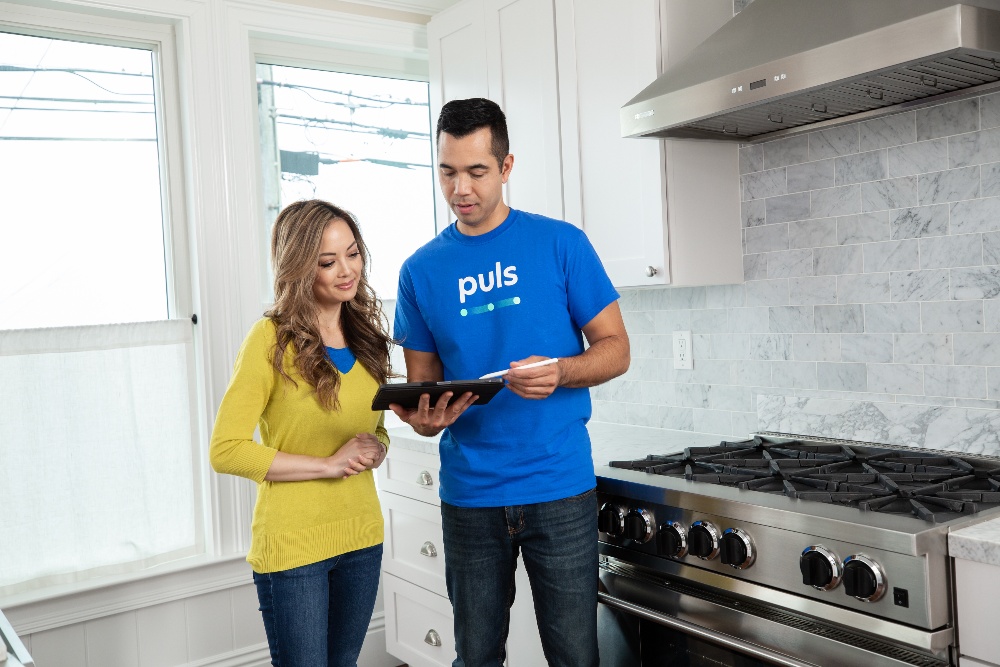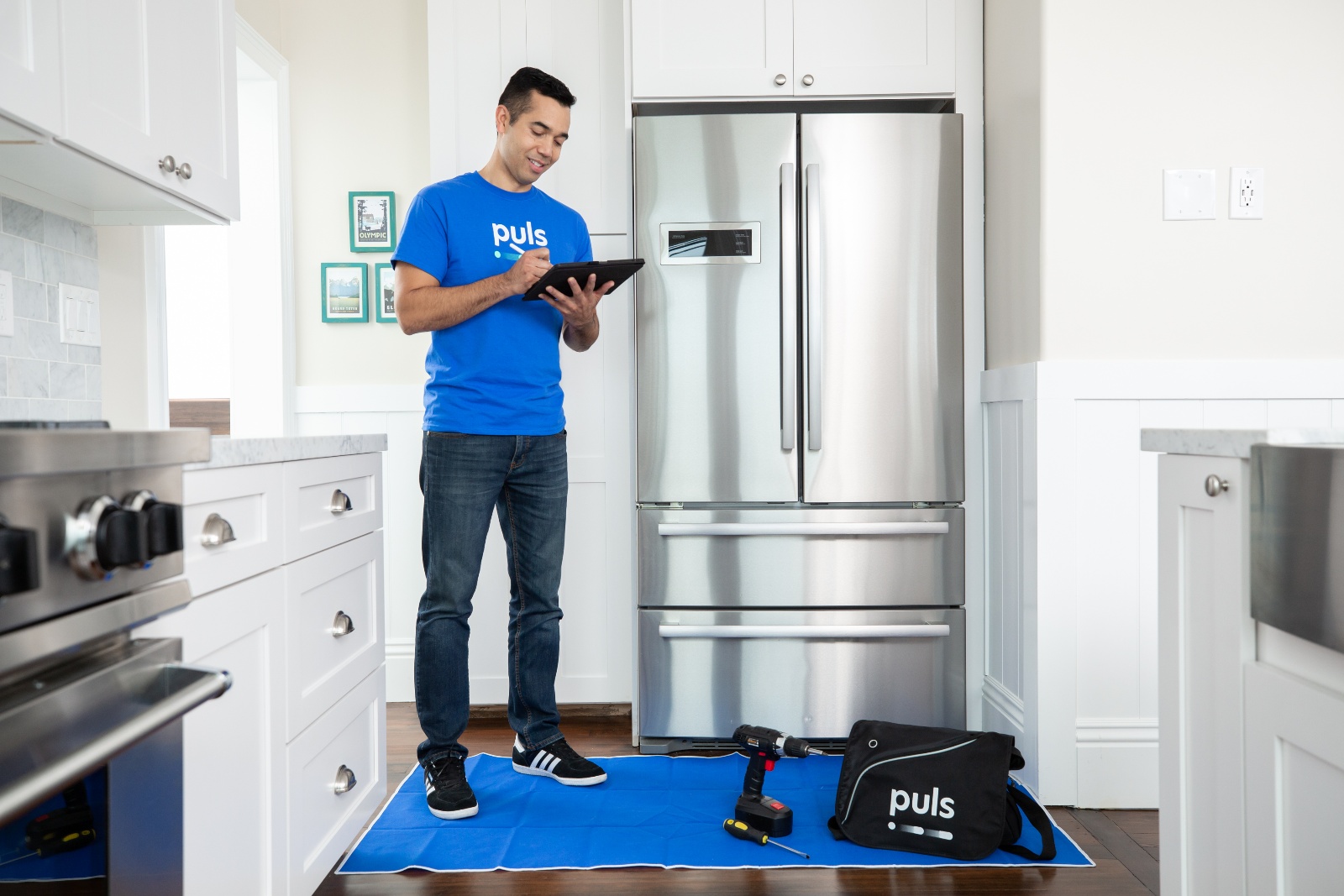There’s nothing that halts a busy household like a broken refrigerator. Whether the ice maker stopped working or the food in the fridge is starting to smell suspiciously foul, your fridge can run the full spectrum on what’s wrong with it—and unfortunately, how much it costs.
The refrigerator is the most-used appliance in the home. Unlike any of the other appliances, like the washer, dryer, or dishwasher, your refrigerator is constantly working day in and day out to keep your food cold and safe to consume.
So when something goes wrong with your refrigerator, it’s safe to assume you’ll pay whatever it takes to get your kitchen up and running again. But how much exactly should you be paying?
We’ve done the research for you on how much you should be paying for an average refrigerator repair and how it will affect your budget. Here’s what you can expect to pay when your fridge is on the fritz.
How Do Refrigerators Operate?
Refrigerators are pretty ingenious. The simple explanation on how they work is that the liquid refrigerant is compressed into a gaseous state through evaporation.
- Compressed refrigerant vapor is pushed to the coils outside the fridge.
- The hot gas is cooled by the room temperature and reverts back to a liquid.
- High pressure liquid refrigerant cools down inside the freezer and refrigerator coils.
- The heat inside the fridge is absorbed by the refrigerant and cools the entire cavity area.
- Eventually, the refrigerant evaporates back into a gas, goes into the compressor, and starts the process again.
Common Refrigerator Problems
There are a number of issues that occur often and present themselves with these symptoms:
- Water leakage—can be caused by a damaged door seal, overflowing drip pan, broken ice maker, or damaged defrost motor.
- Refrigerant leakage—the fridge will likely not be cooling properly, so a repair technician will test to see if the coolant is low. This is likely caused by a malfunctioning compressor.
- Loud noises coming from the refrigerator—this may be a sign of impending problems with the motor, control board, or compressor.
- Refrigerator is too cold at some parts—this may point to a faulty thermostat or blocked vents.
How Much Does Each Repair Cost?
Refrigerator repair costs can vary significantly between brand and model, parts required, and repair companies vs. DIY. Below are cost ranges for repairing the most common components that cause breakdowns:
Compressor
As the main component of the refrigerator, it’s not surprising that this is one of the most expensive parts to replace. There is a chance that the relay switch inside the unit has worn out. This $50 part might do the trick for an inexpensive fix. However, if the compressor itself is malfunctioning, you expect to pay between $250 and $650, including labor, for a new one.
Control Board
The brains of the appliance are vital to its operation. If your fridge has stopped working with no advance issues, it might be the control board. This cannot be repaired and replacement units cost between $500 and $800 for an average model. High-end appliances will likely cost more.
Thermostat
Are you noticing inconsistent temperatures inside the refrigerator or freezer areas? Are you noticing strange noises when it’s running? The thermostat may be the culprit. Make sure it’s set between 35 and 38 degrees F. If not, reset it and test again with a thermometer later. If you have a malfunctioning thermostat, expect to pay between $100 and $440 for a new one.
Defrost Motor
The defrost motor is used to rid your freezer of excess frost. Modern freezers no longer require you to spend hours defrosting it with pots of boiling water and lots of towels to catch the water. If frost is building up, test your defrost motor by turning your thermostat up or down. If there is no temperature change (check with a thermostat,) you’ll need to replace it. Average costs are between $100 and $440.
Coils
Without the coils, your refrigerator would not keep anything cold and your food would be spoiling. Their main purpose is to circulate refrigerant, condense warm air, and then cool the fridge. You can find them on the bottom or back of your appliance, depending on style. Clean off the coils once or twice a year with a vacuum or compressed air to keep them working properly. Damaged coils cost between $100 to $440 to repair.
Door Seal
If the door seal becomes damaged, you may see condensation on the edge or outside of the door. The fridge will need to run more often to make up for the loss of cold air. This will put a strain on the motor, compressor, and increase your energy costs. You can replace the door seal yourself for $40 to $100, depending on model. A professional replacement will cost up to $440 with labor.
Drip Pan
This part does exactly as the name suggests, it collects condensation that drips from the defrost motor. It’s underneath the appliance. If you see water on the floor or hear a rattling noise when the fridge is running, it may need to be secured better or repaired. Repairs will cost between $50 and $200.
Ice Maker
Most newer refrigerators have this convenient feature. Repairs are more expensive than replacements due to multiple moving parts. A common problem is a frozen hose. Try thawing it out. Repairs cost around $330 but a brand new ice maker will run you between $60 and $200.
The Average Cost of Refrigerator Repair

Though your refrigerator repair costs will largely depend on where you’re at in the country, what the issue is, and what brand you have, you can largely expect to spend an average of $200 –$300 to repair a broken refrigerator. But you can often get a diagnosis for as little as $79.
A technician will generally spend two to three hours identifying the problem and then fixing the issue, which can range from a broken compressor to the evaporator fan in the freezer.
Factors Influencing the Cost of Refrigerator Repair
Typically, a repair on the higher end of the price range would require replacing a major part, like a compressor, fan motor, or evaporator fan. On the lower end of the price range, however, would be fixing things like vacuuming dirty coils or replacing a faulty thermostat.
Depending on the company, they may price by the hour, charge you for parts and labor, and others will only charge you a flat rate for everything. If you’re unsure of how their rates work, don’t be afraid to ask the technician before they get started on the job.
Factors in Refrigerator Repair Cost Calculation
Hiring a professional appliance repair service can be a little intimidating and budget-busting. While each company follows a different formula for calculating your refrigerator repair, you should inquire about the company policies before scheduling an appointment or accepting a quote. When your refrigerator stops working, you may be tempted to take the first proposal without asking questions or doing research. These are the usual charges:
- Diagnostic fees—this is a fee to come to your home and diagnose the problem. It does not include the cost of the repair but may be waived if you hire the company to do the work.
- Materials and labor—these are two separate costs. Some companies will give you a total price that may include a mark-up on the materials and parts. Labor charges for the technician’s time and expertise will likely be calculated on an hourly basis.
- Issue and Type of Repair—depending on the problem, you may incur a surcharge if the repair requires a significant amount of time vs. a replacement of the part. If your refrigerator is built into a cabinet or difficult to access, you may find an extra fee on your bill.
Measures to Keep Your Refrigerator in Good Shape
There’s nothing that extends the lifespan of your refrigerator more than by doing regular maintenance on it. Keep these items on your to-do list to keep your fridge running smoothly:
- Vacuum or use an air compressor to clean off the condenser coils. Do this once or twice a year to remove dust, debris, and pet hair.
- Wipe down and lubricate the door seals with petroleum jelly or rubber protectant regularly. Clean sticky spills, food particles, and test the flexibility of the rubber often.
- Clean refrigerator vents located on the inside wall of the fridge and top of the freezer. They help circulate air throughout the appliance and can become dirty or blocked. Keep food from blocking these vents and blocking the airflow. Wipe them down with water or vinegar often.
- Don’t overload your refrigerator. Airflow is critical to the proper operation. Make sure the vents are clear and that there’s space in between food for good circulation.
- Change your water filter as required to keep water tasting fresh and reducing the chance of small dirt particles that could block the tubes.
- Clean your water and ice dispenser regularly to keep bacteria from growing and affecting the taste and safety of your drinking water and ice cubes.
- Repair your refrigerator as soon as you notice a problem. Delaying it can lead to more significant problems and shorten the lifespan of your appliance.
FAQs
Should I repair or replace my refrigerator?
The majority of times it will cost less to repair a fridge than replace it. There are a few instances when you will need to start shopping—when the repair is more than half the cost of a new refrigerator or if your appliance is more than 10 years old.
How do I know when the refrigerator compressor needs repair?
You may notice the compressor clicking on and off, humming constantly, or a grinding or rattling noise. Ice build-up or spoiled food are also symptoms the compressor is not working properly. These are significant signs that it should be replaced which will cost between $250 and $550.
What should I check first when my fridge stops working?
While it may seem obviously, check your power cord. Make sure it’s plugged tight into the outlet. Next, check the circuit breaker. If your fridge isn’t on a dedicated 20 amp circuit, other appliances may draw too much power and trip the breaker. If neither of these are problems, check to see if the outlet itself is bad. Plug a small fan or lamp into the outlet. If none of these are the problem, contact a professional repair service to troubleshoot the problem.
Can I repair my refrigerator myself?
If you’re a DIY-er and want to try to save a little money, you may want to tackle the repair yourself. Some repairs like cleaning the coils, unclogging the drain line, putting in a new door seal, or replacing the thermostat should be simple enough to handle on your own. Anything that requires handling refrigerant or repairing the internal components of the appliance should be left to a professional. Not only can this be dangerous, it may compound the problem and cost more in the end.
Why can I still hear my fridge running but it’s not cold?
Make sure the door is sealing properly, look at the thermostat to be sure it didn’t get changed accidentally, clear the vents to make sure there’s sufficient airflow, and clean the coils. You can also unplug the refrigerator (take any perishable foods out) and leave it unplugged for 12 hours. The tube from the freezer to the refrigerator may be plugged with ice. If the problem doesn’t go away, contact a repair service.
How can I avoid a refrigerator repair?
Regular maintenance will help you avoid breakdowns and extend the life of your appliance. Vacuum or use canned air to clean the coils one or two times a year, wash and lubricate the door seals, keep vents clean and unobstructed, and take care of repairs quickly.
The Bottom Line
There’s never a good time for your refrigerator to break down. It’s inconvenient, it’s annoying, and it’s expensive. Not only can you potentially lose a lot of expensive food to spoilage, repairs or replacements can really throw your budget out of line. Maintain your fridge, don’t overload it, and take care of repairs quickly to keep it running smoothly and efficiently for years.
Schedule a Refrigerator Repair Right Away with Puls

No matter what’s ailing your fridge, our skilled technicians are able to handle whatever your appliance throws their way. From fixing a clog in the drain lines to replacing the ice maker to replacing a faulty compressor, our technicians are highly trained and specialized in fridge maintenance and repair.
And if you’re uncertain what’s going on with your fridge, our Puls technicians will act as your personal appliance detective team, using their in-depth knowledge and fridge expertise to determine what the problem is right away.
When you hire a run-of-the-mill repair team, you may have an idea of a figure that they will charge based on national averages, but until they’re in your home you don’t know how much they will charge to even look at your fridge.
With Puls, it’s the complete opposite. Our appliance repairs start at $139 and our in-home diagnosis is only $89—which is completely waived should you decide to use us to repair your fridge. Puls has a solution to avoiding unexpected appliance breakdown expenses—become a Puls member and for just $34.99 per month, gain peace-of-mind knowing all your appliances are covered.
Scheduling an appointment with Puls is easy and only takes seconds, thanks to our convenient, user-friendly website. Plus, our technicians are typically able to get to you quickly, often even arriving to fix your appliance within the same day that you schedule it.
And rest assured, all of our work comes with a 90-day guarantee on all parts and labor. Visit our website to save 5% off your first Puls service and book your fridge repair appointment today.




